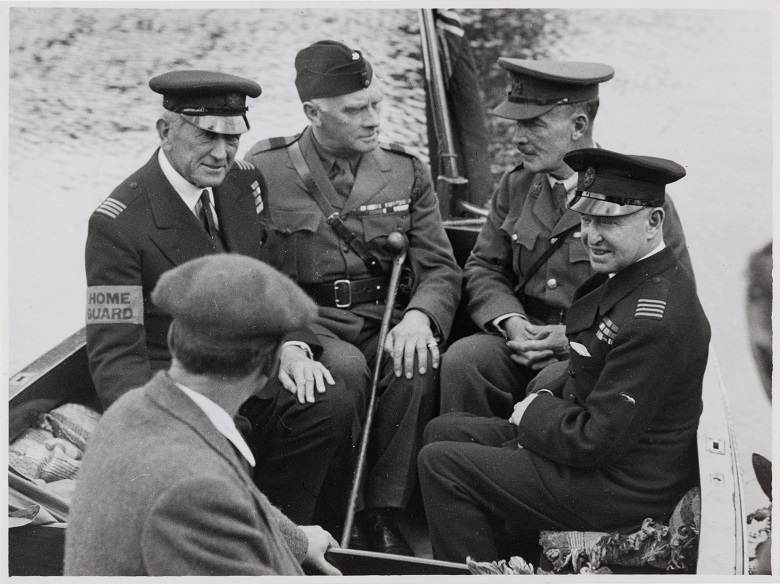Archive exhibition celebrates history of the River Thames
Friday 7th May 2021 07:53

Men of the Upper Thames Patrol during World War Two
The story of the River Thames’ very own Dads’ Army is one of the highlights of a fascinating online exhibition created by Berkshire Record Office in partnership with Thames Water.
Where Smooth Waters Glide draws from the archives of the Thames Conservancy and its predecessor, the Thames Navigation Commission.
It was these bodies that built the river outside London that we know today – the pound locks, weirs and towpaths – and were responsible for keeping the river safe and clean.
Today, the Thames Conservancy functions have passed to Thames Water and the Environment Agency. In fact, Thames Water’s Clearwater Court HQ was built on the site of the Thames Conservancy offices on the banks of the Thames in Reading.
Thames Water archaeologist Dr Victoria Reeve said: “Thames Water and its predecessors have been helping look after the River Thames, and the life it supports, for 250 years.
“As one of its modern-day custodians, whose job is always ongoing, we are delighted to see its fascinating history on display for the public to enjoy.
“The River Thames faces new challenges today. There is much we can learn by understanding yesterday’s challenges in the way we currently protect the river for the enjoyment of future generations.”
The first meeting of the reformed Thames Navigation Commission took place in Henley in 1771. Its job was to turn the Thames into the Georgian HS2 – a free-flowing trade route for transport between London and Oxford.
It did so by removing obstructions and building the pound locks and weirs – a massive investment in public infrastructure that shaved half a day’s travel for every lock built and reduced the risk of damaged barges. Barge owners paid tolls to the Commission to use the locks.
The Thames’ trading heyday was short-lived, as the railways soon came to offer quicker delivery, but the Commission survived, redesignated as the Thames Conservancy and tasked not only with maintaining the locks but with keeping the river safe and clean.
Conservancy staff were also tasked with stopping pollution. This first became an issue during the Victorian period, as flushing toilets and basic sewerage systems drained untreated waste into the Thames.
By the 1930s the River Purification Service inspectors were on duty 24/7 with powers to enter premises or board any vessel. One of their jobs was removing dead animals that had been thrown into the river.
In the Second World War, many of the lock-keepers joined the Forces and the locks were maintained by their wives or retired staff.
The river was protected by the Upper Thames Patrol – hundreds of armed volunteers who guarded the locks and bridges and cruised the river in private launches. The UTP was part of the Home Guard and its happy lack of action during the War led to its affectionate acronym as ‘Up The Pub’.
Mark Stevens, Berkshire county archivist, said: “The Thames is much-loved and very special. It also has a fascinating history, and it’s quite humbling to see how much effort has gone and still goes into caring for the river.
“The Thames Conservancy archive is living proof of this effort – totalling tens of thousands of pages, plans and other documents. We’re delighted to present just a few of them to tell the river’s story.”
- Where Smooth Waters Glide can be found at www.thames250exhibition.com
- Thames Water’s own archive offers access to a rare collection of photographs and documents charting the history of London’s water and sewerage system over the past 150 years.
